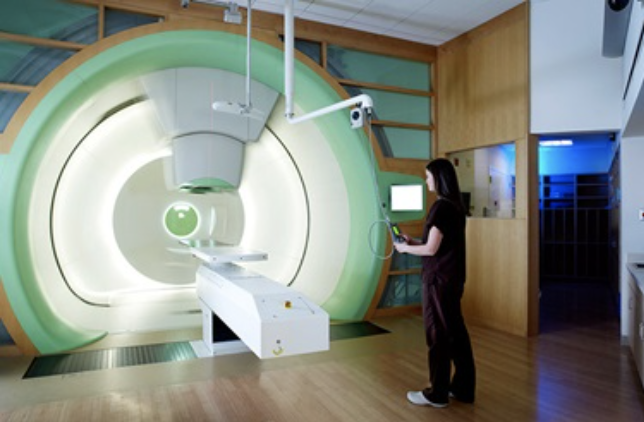All About Proton Therapy
Table of Contents
Table of Contents
What is proton therapy?
Proton therapy is a type of external-beam radiation therapy used to treat cancer. It uses protons rather than x-rays that are used in conventional radiation therapy. It is a painless cancer treatment that delivers radiation into the body from a machine outside the body. The proton beam can be directed to exact areas or targets inside the body. Proton therapy treats cancers that are in or close to important parts of the body like the brain or heart. Protons can be used alone or with other cancer treatments.
How does proton therapy work?
Your healthcare team starts by measuring the target or tumor's shape, location, and depth. This is done using CT scans, MRI scans, PET scans, or other imaging that can look at the inside of your body. This information is then used to make a treatment plan for you. Proton beams release most of their energy right at the tumor. When the proton beam enters and exits the body it releases very low energy. This limits the amount of radiation to nearby healthy tissue, lessening the risk of side effects.
What are the side effects of proton therapy?
Proton therapy limits the radiation to the healthy tissue, but it can be affected causing side effects. Side effects can start during or after treatment, and might include:
The side effects depend on the area of your body being treated and the amount of radiation you receive. You can learn more about other side effects in the Radiation Side Effects Menu.
What type of cancers are treated with proton therapy?
Proton therapy is used for adults and children. It can be used to treat some malignant (cancerous) and benign (non-cancerous) tumors. It can also be used if the cancer is still there or comes back after you have already had radiation treatment.
Proton therapy may be used to treat:
- Brain and spine tumors.
- Breast cancer.
- Prostate cancer.
- Head and neck cancers.
- Liver cancer.
- Lung cancer.
- Esophageal cancer.
- Anal, colon, and rectal Cancer.
- Eye melanoma.
- Lymphoma.
- Pancreatic cancer.
- Sarcoma.
- Tumors in the base of the skull.
The list of cancers being treated by protons continues to grow as we learn more about this type of treatment.
What are the benefits of proton therapy?
Both traditional and proton therapy kill cancer cells and shrink tumors, but proton therapy has some advantages that include:
- Less radiation to healthy tissue.
- Lower risk of short and long-term side effects.
- Less risk of secondary cancers caused by treatment.
- Can be used to treat adults and children.
- Able to treat tumors in hard-to-reach places or near important organs.
- Effective against recurring tumors even if radiation has been given before.
- Ability to give a higher treatment dose.
- Improves quality of life during and after radiation.
Proton therapy has many benefits but may not be the right choice for everyone. Your radiation oncologist will explain if it is right for you.
What are the disadvantages of proton therapy?
While there are many benefits of proton therapy there are some disadvantages.
- There are not many proton centers. You may have to travel far for treatment.
- Insurance providers may or may not cover treatment. Talk to your insurance provider to learn more.
- Not all cancers can be treated with proton therapy.
- More research and clinical trials are needed.
- There are still some side effects from treatment.
Resources for More Information
To locate a proton center in the United States near you visit: The National Association for Proton Therapy
For a complete list of facilities in operation, and under construction worldwide visit the: Particle Therapy Co-Operative Group
To learn more about the treatment process and what to expect during treatment visit the Overview of Proton Therapy.
To get a Behind the Scenes look at proton therapy.
